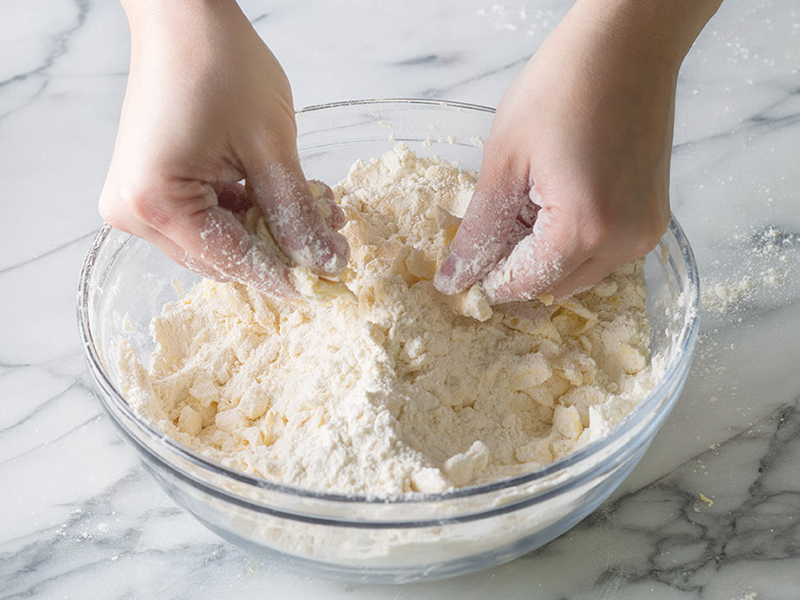
The best way to create tender scones, biscuits, and cobbler toppings? Cut cold butter into flour until you have perfect tiny lumps. We dive deep into the three main methods, highlighting their pros and cons.

By Hand-
Method: Begin with cold butter, cold flour, and cold hands (plunged in an ice water bath and dried, if necessary). Slice cold butter into cubes or pats with a sharp knife. Scatter butter over flour in a wide, shallow bowl. Using your thumb and fingertips, rub butter into flour in a snapping motion until all butter pieces are small pea-size lumps and covered in flour.
Pro: This method offers the baker the greatest amount of control in determining the size of their butter pieces, and it’s the best way to make sure you’re not overworking the dough.
Con: The heat from your hands will threaten softening the cold butter, not to mention the process is the most time-consuming of the three.

By Pastry Blender-
Method: Begin with cold butter, cold flour, and a cold pastry blender (refrigerate, if necessary). Slice cold butter into cubes or pats with a sharp knife. Scatter butter over flour in a wide, shallow bowl. Press down on butter with pastry blender, working up and down until all butter pieces are small pea-size lumps and covered in flour.
Pro: This method allows you to properly control the exact size of the butter lumps without adding heat from your hands.
Con: Because it takes more time to manually slice in the butter, you risk having the butter come to room temperature during the process.

By Food Processor-
Method: Begin with cold butter and cold flour. Slice cold butter into cubes or pats with a sharp knife. Scatter butter over flour in the work bowl of a food processor. Pulse until all butter pieces are small pea-size lumps and covered in flour,
5 to 10 times.
Pro: The fastest, most efficient method of the bunch, processing your butter into the flour ensures even incorporation without bringing the heat of your hands or the room into the equation.
Con: If you’re not keeping an eye on it, you can overprocess the mixture and begin to cream it. Once the mixture is overprocessed, you’ll be unable to get those ideal lumps of butter back, so be prepared to give this step your undivided attention.
Pro Tip: Cutting in butter guarantees that the cold pieces of fat melt in the oven, creating steam, moisture, and, ideally, perfectly flaky layers. Whether using your hands, a pastry blender, or a food processor, the end result of cutting in butter should look like this.



